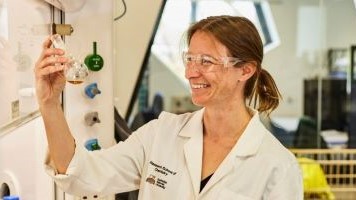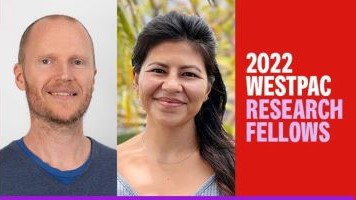
Written by Leanne Tomkins
Researching within the sustainability space is synthetic chemist, bio-engineer and 2020 Westpac Research Fellow Dr Yu Heng Lau. He and his team at the School of Chemistry at the University of Sydney are exploring how to improve crop yields, using the natural processes that happen in other photosynthetic organisms.
They are engineering simple versions of a protein structure found in blue-green algae and inserting it into plants to improve their carbon-capturing efficiency.
“I’d describe myself as a fundamental or discovery science researcher,” says Yu Heng. “It's mid- to long-term thinking that could help tackle food scarcity in the future.
“If you think about rising populations and the increasing demand on food, and at the same time shrinking amounts of arable land, you can see that productivity is being squeezed on both sides,” he says. “Technology like ours is one of the areas where we might be able to help relieve that squeeze.”
The architecture of algae
“We're interested in how living things capture carbon from the air,” says Yu Heng. “We know that plants do it to help them grow. What less people realise is that a lot of the world's carbon dioxide gets captured from blue-green algae and other ocean bacteria, and that they have a really clever way of doing it.
“It all starts with a single enzyme, Rubisco,” says Yu Heng. “It’s the most abundant protein on earth but it’s inefficient at taking carbon dioxide molecules from the air and converting them into something useful. This is the protein that we're trying to improve.”
Compared to plants, some blue-green algae and bacteria are much more efficient at converting carbon because of the protein structures found within their cells.
“There's an architecture to a cell in the same way there's an architecture to a house or to a city, and it’s been optimised for productivity,” he says. “The architectures are made out of proteins and they do photosynthesis. Our goal is to understand how those architectures are built and how they actually help carbon capture happen more efficiently.”
The fundamentals
Yu Heng and his team have taken the protein that builds the best architecture for Rubisco from blue-green algae and engineered a synthetic version that is simpler and self-assembling. They are currently working with plant biologists at the lab of Prof. Spencer Whitney at the Australian National University in Canberra to put the engineered proteins into plants.
“Even if you only get a few percent increase in carbon-capture efficiency, if it’s something that's scalable then it means a lot for sustainability in industries like agriculture,” says Yu Heng.
In the lab, however, the work is foundational.
“We do a lot of fundamental work understanding how the self-assembly of these proteins happens,” says Yu Heng. “This is really the basic properties of proteins, but nobody actually knows them. And if you don't understand how something works at a fundamental level, how are you going to design something based on it?”
To understand, Yu Heng invites us to imagine the protein cell as a factory and ourselves as the overseer.
“You have to watch your accounts,” he says. “You have to know where all your materials are going, where the workers are, how fast everything is and make sure there are no bottlenecks… In the case of this protein, we build the architecture of the ‘factory’ and then study how carbon dioxide gets in and how sugars go out of these architectures and how fast it all happens.”
Yu Heng’s research partner Dr Tobias Giessen at the University of Michigan determines high-resolution structures of the proteins using cryo-electron microscopy, technology that “shoots electrons” at a thin layer of proteins that has been frozen to preserve it during imaging.
“They’ve got a really good setup and can tell us what our proteins actually look like once we’ve made it,” says Yu Heng. “Usually, we get the correct structure but every so often we get something rather unusual, which is even more interesting. Hopefully we can use that knowledge to build an efficient version inside plants.”
Sustainable support
Yu Heng was originally encouraged to apply to be a Westpac Research Fellow by one his mentors at the School of Chemistry at the University of Sydney and is proud to be part of an alumni working on sustainability projects.
Published 4 November 2022
Related articles
Which scholarship?
Inspired to apply for Westpac Scholars?
Read on to find out more about our scholarship programs:
- Westpac Asian Exchange Scholarship
- Westpac Young Technologists Scholarship
- Westpac Social Change Fellowship
- Westpac Future Leaders Scholarship
- Westpac Research Fellowship
Scholarship enquiries and updates
For scholarship enquiries email:
westpacscholars@westpac.com.au
Connect with us
Ready to apply?
Find out more
- Funding Guidelines
- Supporting Document Templates


